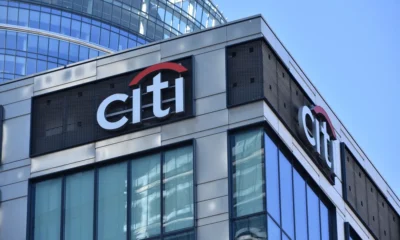Published
10 months agoon

Reliance Industries Limited, India’s largest corporate by revenue, is making headlines again, this time for securing a $3 billion dual-currency loan.
The Mukesh Ambani-led conglomerate has raised this substantial sum from a consortium of 11 global banks, marking its largest loan deal in nearly two years. But what’s the rationale behind this financial maneuver, and how does it fit into RIL’s broader strategy?
Purpose of the Loan
The primary goal of this $3 billion loan is refinancing. According to Bloomberg data, RIL faces loan repayments worth approximately $2.9 billion, including interest payments, due in 2025. This dual-currency loan provides the liquidity needed to address these maturing debts without dipping into its operational cash flows or reserves.
Additionally, such a large-scale refinancing move points toward the company’s focus on maintaining a vigorous financial position while leveraging favorable global interest rates.
Details of the Loan Structure
The five-year loan was priced at 120 basis points over the three-month secured overnight financing rate (SOFR) and includes a $450 million tranche denominated in Japanese yen. This yen-denominated portion was priced at 0.75% above the three-month Tokyo Interbank Offer Rate (Tibor), reflecting RIL’s strategic move to tap into Japan’s low-interest environment.
RIL has already drawn down $700 million of the loan amount, as per reports indicating the urgency to shore up funds for its impending repayments.
The Lenders Behind the Deal
The $3 billion loan has been backed by a diverse group of lenders, including global banking heavyweights and one Indian institution.
Bank of America: $343 million
DBS Bank and HSBC: $300 million each
MUFG (Japan): $280 million
State Bank of India (SBI): $275 million (the only Indian lender)
Standard Chartered, Mizuho Bank, and SMBC (Japan): $250 million each
First Abu Dhabi Bank, Citibank, and Credit Agricole CIB (France): $241 million each
These banks are expected to syndicate the loan further before the fiscal year ends in March, allowing them to dilute their exposure and make room for additional lending to RIL, India’s highest-rated company.
Historical Context and Strategy
This isn’t the first time RIL has pursued a dual-currency loan strategy. In late 2022, the company raised a similar $3 billion through a syndicated loan involving 15 global banks. That deal’s strong response allowed RIL to retain an additional $2 billion over its initial target.
The latest loan mirrors this strategy, reaffirming RIL’s ability to attract global financial institutions. It also illustrates the company’s proactive approach to managing its debt obligations, a critical aspect given its aggressive investment and acquisition spree in recent years.
In the last five years, RIL has spent a staggering $13 billion on acquisitions, advancing its portfolio across sectors such as oil, telecom, retail, and green energy. This borrowing helps sustain the momentum of these capital-intensive ventures while ensuring that short-term financial liabilities don’t impede long-term growth.

In the last five years, Reliance Industries Limited (RIL) has redefined its trajectory, spending a staggering $13 billion on acquisitions. These strategic investments are part of the conglomerate’s pivot from its traditional oil and petrochemical business to cleaner energy and consumer-facing verticals such as telecom, retail, media, and healthcare.
Breaking Down the $13 Billion Investment
Reliance’s acquisition strategy is diverse and targeted, reflecting its ambition to dominate emerging sectors while strengthening its foothold in existing ones. According to Morgan Stanley, the distribution of the $13 billion investment is as follows:
Technology, Media, and Telecommunications (TMT): $6 billion (48%)
Telecom and Internet: $2.6 billion (20%)
New Energy: $1.7 billion (14%)
Retail: $1.14 billion (9%)
The company’s largest acquisition in this period was the $981 million buyout of Hathway Cable and Datacom Ltd, a local cable TV and internet service provider. Other significant deals include the $771 million acquisition of REC Solar Holdings, a Norwegian solar panel maker, and the $767 million purchase of JustDial, a prominent search and database firm.
Expanding into Healthcare
RIL’s most recent acquisition underscores its growing focus on healthcare. Last week, it acquired Karkinos Healthcare for ₹375 crore, securing a 100% stake in the oncology platform.
Karkinos, established in 2020, specializes in technology-driven solutions for early cancer detection, diagnosis, and management. The company partners with hospitals to offer services such as testing and radiation therapy, aiming to provide effective cancer treatment at substantially lower costs.
Karkinos Healthcare focuses on early cancer detection and management through its Distributed Cancer Care Network (DCCN) and Advanced Cancer Care Diagnostics and Research (ACCDR).
As of December 2023, it has partnered with around 60 hospitals and is establishing a 150-bed multispecialty cancer hospital in Imphal, Manipur; before the acquisition, Karkinos’ stakeholders included Ewart Investments Ltd (a Tata Sons subsidiary), Mayo Clinic, and Reliance Digital Health Ltd.
RIL’s investment in Karkinos aligns with its broader strategy of building a comprehensive healthcare ecosystem. The acquisition complements its earlier investments in companies like Netmeds, HAGI, and Strand Life Sciences, marking its commitment to invest in diagnostics and digital healthcare.
The Last Bit
RIL’s acquisition spree reflects a calculated shift to position itself as a leader in sustainable energy and consumer-centric businesses. This transition is particularly noteworthy given its historical reliance on oil and petrochemicals. .
Further, raising this $3 billion dual-currency loan, the company has reaffirmed its financial prudence and strategic foresight.
However, the success of this refinancing effort will hinge on RIL’s ability to manage its debt while sustaining profitability across its core businesses. The fact that the conglomerate has a robust credit profile and market reputation, it makes it a favored borrower in the global financial ecosystem.


Elon Musk’s Growing Troubles. X Under Scrutiny With Stagnant Growth And Slipping Revenues. Tesla Hacked 4 Times In One Day Even As Tesla Sales In Europe Are Sliding.


FII Selling Records Colossal Rs 50,000 Crore This Month. How Bad Can It Get? A Lot, Curtsey Trump Administration


The Great Haul, IPO Run To Gallop In 2025 As 80+ Companies Await SEBI Nod


China To Issue Record $411 Billion In Special Treasury Bonds For 2025. 7 Key Questions For China’s Economy In 2025 And How India Needs To Learn From These Measures.


Farmers Protest, A Renewed Push Toward Delhi. How Authentic And Justified Are The Protesting Farmers Angst?


AI Colleague At Workplace, Citigroup’s New Step Forward. 19 Companies That Rolled Out Internal AI Tools For Employees.
